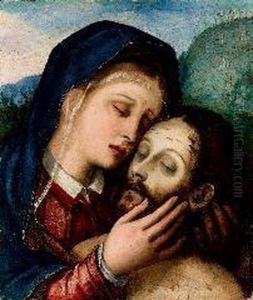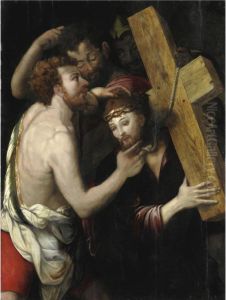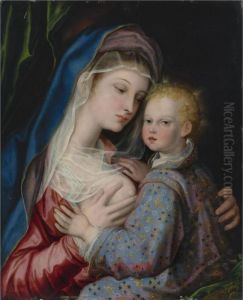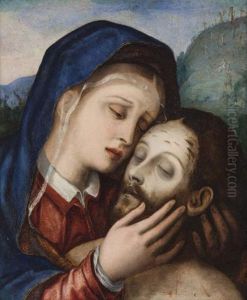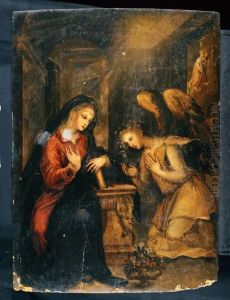Giovanni Bernardo Lama Paintings
Giovanni Bernardo Lama was an Italian painter of the Renaissance period, born in 1508 in Naples, Italy. His artistic journey began in the vibrant Neapolitan art scene, which was under the influence of the High Renaissance and Mannerist styles emanating from Rome and Florence. Lama's style was notably influenced by the works of Raphael and other prominent Renaissance artists, although his work also demonstrates a distinct personal style characterized by clear narrative and expressive figures.
Not much is known about Lama's training or early career, but it is evident that he was deeply integrated into the Neapolitan art community. His works include religious compositions, altarpieces, and frescoes, which often feature a strong use of color and attention to detail that was typical of the Renaissance period. Lama's religious paintings, in particular, reflect a commitment to both spiritual and artistic values of the time, with iconography that was meant to inspire and educate the faithful.
One of his most significant works is the 'Madonna with Child and Souls in Purgatory,' which is housed in the church of Purgatorio ad Arco in Naples. This piece is indicative of Lama's skill in composition and his ability to convey complex theological ideas through art. His other notable works include frescoes in the churches of San Giovanni Maggiore and San Giorgio Maggiore in Naples, which further cemented his reputation as a skilled painter of ecclesiastical subjects.
Despite his evident contributions to the Neapolitan Renaissance, Giovanni Bernardo Lama is not as widely recognized as some of his contemporaries. Scholars have attributed this to the limited geographical range of his work and the dominance of other artists in the region who overshadowed him. Nevertheless, his paintings remain important examples of 16th-century Neapolitan art.
Lama's career spanned the turbulent period of the Counter-Reformation, which sought to reaffirm the Catholic Church's doctrines and practices in response to the Protestant Reformation. His art reflects the Church's emphasis on piety and orthodoxy, serving both as objects of devotion and as tools for religious instruction.
Giovanni Bernardo Lama died in 1579 in Naples. His works continue to be studied by art historians interested in the Neapolitan school of painting and the broader context of Renaissance art in Italy. While he may not have achieved the same level of fame as some of his peers, Lama's paintings are valued for their artistic merit and their contribution to the religious and cultural landscape of 16th-century Italy.
